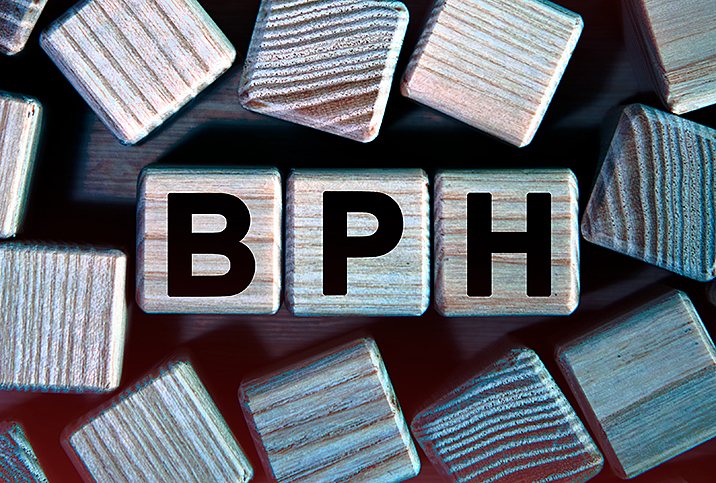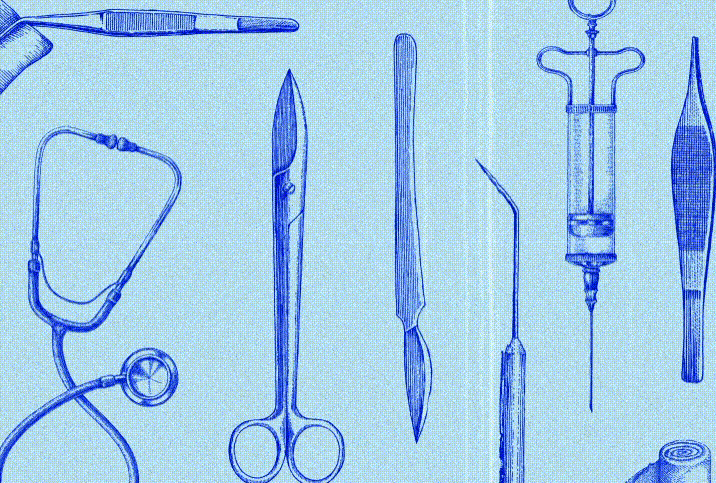Should I Green-Light Laser Therapy for My BPH?

Prince Charles catches a lot of flak for his flappy ears. If it seems like they're getting bigger, it's because they are. The large schnozzes on the famous faces of men like Adrien Brody and Owen Wilson are getting longer, too. You may not realize it, but ears and noses get larger as we get older because they're made mostly of cartilage, which breaks down and sags over time due to gravity.
One body part located south of the border also grows beyond puberty. Sorry, guys, it's not that body part. It's the prostate gland. Every man's prostate grows naturally with age, generally starting in their 30s. No one can post a meme of your outsized prostate on Twitter like they can for famous noses and ears, but for many men, this growth leads to benign prostatic hyperplasia (BPH), a noncancerous condition that interferes with urine flow. Obstructive symptoms of an enlarged prostate include a weak or intermittent stream and straining to urinate.
Urinary symptoms related to BPH typically begin between the ages of 50 and 60—about half of all men in this age range suffer from the condition.
Medications are the first-line treatment for BPH if the symptoms are not severe. If your prostate doesn't respond to meds or is particularly large, you may need a minimally invasive surgical option.
Obstructive symptoms of an enlarged prostate include a weak or intermittent stream and straining to urinate.
The gold standard for BPH surgery is transurethral resection of the prostate (TURP), which has been in use for about a century. A doctor uses an instrument called a resectoscope to surgically trim and remove excess prostate tissue that may be blocking urine flow.
Through the years, TURP has been considered the most effective treatment for relieving symptoms and restoring urine flow, said David Yao, M.D., attending urologist at the David Geffen School of Medicine at UCLA.
In recent decades, laser therapy has been developed to remove prostate tissue. Holmium laser enucleation of the prostate, or HoLEP, was introduced in the 1990s. The relatively new treatment on the block is the GreenLight laser, which has been manufactured for about 20 years.
All laser therapies for benign prostatic hyperplasia (sometimes called hypertrophy) have the same goals: reduce prostate volume, decrease bladder outlet obstruction and improve urinary symptoms.
A little knowledge, and a long conversation with your urologist, can help you decide whether to go for the gold or proceed with the green light.
Similarities between surgical options for BPH
During the TURP procedure, a surgeon removes excess prostate tissue using a resectoscope, which includes a device with either a button-shaped tip that cauterizes the tissue or a heated wire loop that acts like a hot knife slicing through the tissue, said Majdee Islam, M.D., a urologist and men's health specialist at Urology of St. Louis.
The patented GreenLight laser therapy, also known as photovaporization of the prostate (PVP), is basically an alternative to TURP, Islam said. Both procedures use a similar scope, but PVP uses laser energy to remove prostate tissue through vaporization. Both procedures are performed through the urethra, so no cuts or incisions are necessary.
The operative times are similar, and success rates for patients being able to urinate afterward are also similar, Islam said. Each procedure usually requires an overnight hospital stay, though some patients may go home the same day if there was little blood loss and they can urinate afterward.
Clinical studies have shown that PVP provides comparable symptom relief to TURP, Yao said.
"Most patients experience relief of symptoms and a dramatic improvement in urine flow within 24 hours of the procedure," he added.
Differences between surgical options for BPH
Two key factors help determine the treatment method for a BPH patient: the size of the prostate gland and whether the patient is a bleeding risk.
PVP is an appropriate surgical approach for patients with an enlarged prostate of 30 to 80 grams, but not for extremely large prostates of more than 80 grams, Yao said.
HoLEP therapy, which also uses a high-powered laser, can treat larger prostates that PVP can't through a technique called enucleation, which takes out the portion of the prostate that is blocking urine flow as a whole piece or in smaller pieces, Islam said.
"[HoLEP is] specific for essentially helping to be able to enucleate the tissue better and allows you to peel the tissue off a little bit easier, whereas the GreenLight laser does a better job of vaporizing the tissue, but it doesn't really allow for the kind of enucleation aspect of the procedure," Islam said, adding that the bigger the prostate, the more difficult and time-consuming an ablation procedure can be. "Around 80 grams, you start thinking about using HoLEP or open simple prostatectomy."
Yao said the GreenLight laser is inferior to holmium laser therapy for enucleation as far as reducing prostate size and improving urine flow; therefore, GreenLight is primarily used for vaporization. However, there is a higher rate of stress urinary incontinence for several months after surgery when enucleation is performed on a very large prostate as compared to photovaporization and TURP.
The main benefit of PVP over TURP is that bleeding risks and complications are lower for men who are unable to stop their anticoagulation (blood thinners) or antiplatelet therapy, Yao said.
The GreenLight laser wavelength allows for the removal of tissue in a way that results in very little blood loss, Islam said, adding that patients on blood-thinning medication can potentially stay on their meds or stop for a short time to undergo the PVP procedure. For TURP, doctors usually have patients stop taking blood thinners for at least five to seven days before the procedure.
"If the patient is on a blood thinner, I lean toward the GreenLight laser, mainly because of that potential decrease in bleeding," Islam said.
Risks and side effects of laser therapy
Most BPH patients can resume normal activities within a couple of days after minimally invasive surgery. Typically, strenuous activity can be resumed within two weeks.
Of course, all surgical treatments have inherent potential risks. The most common risks associated with photovaporization are blood in the urine for one to two weeks, burning with urination for a week to three months and short-term urinary tract infections, Yao said.
The risks of infection and scarring of the urethra are small, and similar between PVP and TURP, Islam said. Scarring can potentially block urine flow, but this is an uncommon occurrence. Incontinence, or leakage of urine, is also fairly unusual after PVP, he added.
Men are likely to be curious about sexual side effects, as well. After all, during the ejaculation process, the prostate gland contributes seminal fluid and has muscles that contract to propel semen forward through the urethra.
The good news: Photovaporization of the prostate does not generally affect arousal, stimulation or orgasms.
The bad news: Many men experience retrograde ejaculation, which results in reduced or completely absent ejaculate volume, Yao said. These risks are the same for PVP, TURP and HoLEP therapy.
Following surgery, the patient now has an area in the prostate that used to be obstructed but isn't anymore, which creates a path of least resistance for the ejaculate to flow, Islam explained. In some men, ejaculate flows backward into the bladder during orgasm and instead comes out during urination.
Yao said the PVP procedure shouldn't affect erections afterward. Islam said there is conflicting data on whether the risk of sexual dysfunction after PVP is better or worse than with TURP.
"Usually, we tell patients there is a small risk of decrease in erectile function, but it's hard to know whether that's from the procedure itself versus just time, in terms of patients getting older and having further progression of their decrease in erectile function just due to other things, like diabetes, hypertension and so on," Islam said.
Green or gold?
A comparative trial called the GOLIATH study found no significant difference between GreenLight laser therapy and transurethral resection of the prostate for improvement of urinary symptoms, need for transfusion, urinary incontinence rates or need for reoperation, Yao noted.
"GreenLight laser therapy is very similar to TURP and can be considered a standard of care for the surgical treatment of enlarged prostates that are not extremely enlarged," he said.
PVP is used as routinely as TURP, Islam said. The choice for a patient may be based simply on a urologist's experience with each procedure. Many urologists, including Islam, are trained in both procedures.
"I think they're both quite effective. I have patients who are very happy with both procedures," Islam said.
"There are certain [urologists] who really do just one or the other, and I don't think either choice is wrong by any means," he added. "I think oftentimes it ends up being a conversation between the urologist and their patient, and looking at the risk factor of the patient and deciding what's right."


















